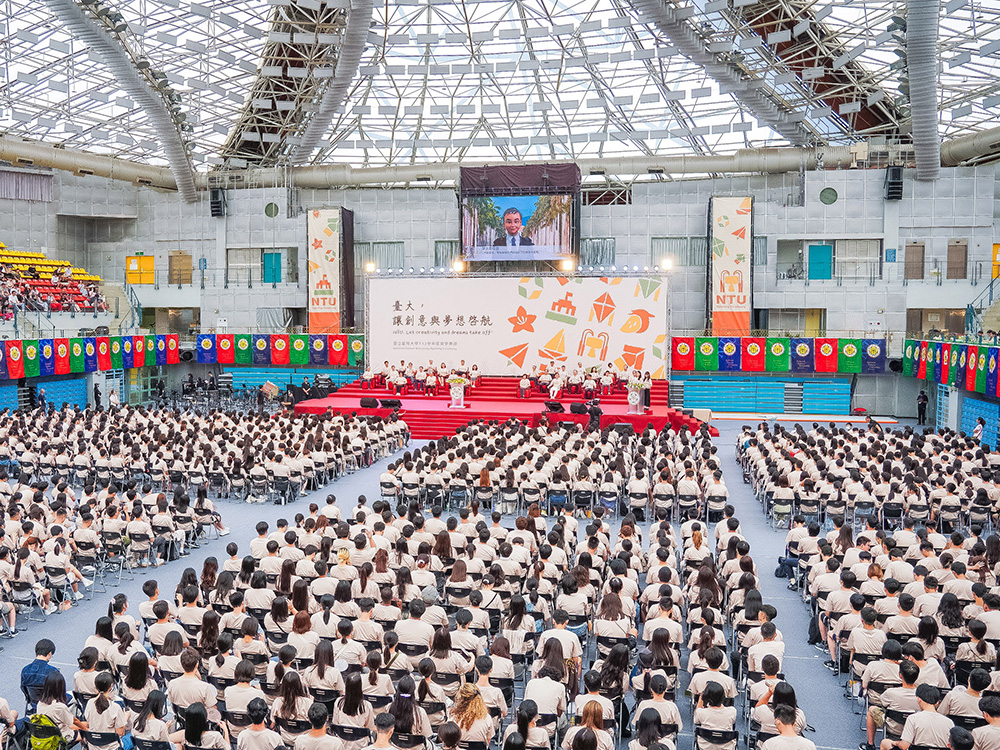
NTU Opening Ceremony: “Where Creativity and Dreams Take Flight”
瀏覽器版本過舊,或未開啟 javascript
請更新瀏覽器或啟用 javascript
Spotlights
Amano Hiroshi, the Nobel laureate in Physics in 2014 and currently a Distinguished Professor at Nagoya University in Japan, gave a lecture to the students and faculty of NTU on September 1st, following an invitation from the NTU Royal Palm Lecture Series. The event witnessed enthusiastic interaction from the audience.
NTU has established the NTU Royal Palm Lecture Series this year, inviting distinguished figures who have outstanding achievements or international influence, to give lectures on campus. For the inaugural lecture of the NTU Royal Palm Lecture Series, NTU invited Professor Amano Hiroshi, the 2014 Nobel Laureate in Physics, to deliver a lecture.
Amano Hiroshi, the Nobel laureate in Physics in 2014 and currently a distinguished professor at Nagoya University in Japan, gave a lecture to the students and faculty of NTU on September 1st, following an invitation from the NTU Royal Palm Lecture Series. The event witnessed enthusiastic interaction from the audience.
NTU President Wen-Chang Chen (left) presents an exquisite trophy to Professor Amano Hiroshi (right), the Nobel laureate in Physics in 2014, who participated in the inaugural session of the NTU Royal Palm Lecture Series.
NTU established the NTU Royal Palm Lecture Series, inviting accomplished individuals from academia and the business world, both domestic and international, to give lectures on campus, thereby broadening the international perspectives of both students and faculty. The inaugural NTU Royal Palm Lecture Series, held on September 1st, featured Professor Amano Hiroshi, the 2014 Nobel laureate in Physics. After his lecture, he took a group photo with the attending students and faculty members (in the middle of the front row).
National Taiwan University (NTU) has established the NTU Royal Palm Lecture Series this year, inviting distinguished figures from academia and the business world, both domestically and internationally, who have outstanding achievements or international influence, to give lectures on campus. The goal is to broaden the international perspectives of both faculty and students. For the inaugural lecture of the NTU Royal Palm Lecture Series, NTU invited Professor Amano Hiroshi, the 2014 Nobel Laureate in Physics, to deliver a lecture on September 1st, titled "Why did GaN-based blue LED emerge from a poor University." The lecture was well-received, with active participation from students and faculty.
Amano Hiroshi, currently a Distinguished Professor at Nagoya University in Japan, is a renowned engineer with expertise in various fields, including light-emitting diodes (LEDs), high-power/high-frequency transistors, semiconductor physics, crystal growth, and nanostructures. In 2014, Amano Hiroshi, along with his colleagues Professor Isamu Akasaki, currently a Distinguished Professor and Professors Emeriti at Nagoya University, and Professor Shuji Nakamura of the University of California, Santa Barbara, were jointly awarded the 2014 Nobel Prize in Physics for their groundbreaking invention of "high-brightness blue LEDs, which revolutionized energy-efficient and bright white light sources." The invention of blue LED technology enabled the production of LEDs that emit all three primary colors, allowing for the creation of bright white light with LEDs, significantly improving lighting efficiency.
Amano Hiroshi's visit to deliver a lecture on campus created a buzz in the university community. Shih-Liang Chien Lecture Hall of Zonghe Lecture Building was packed with approximately 600 students and faculty members, with some even sitting on the stairs to listen. To accommodate more people who couldn't enter the main hall, NTU set up a second venue. During his speech, NTU President Wen-chang Chen expressed his honor in inviting Professor Amano Hiroshi to deliver the lecture. He praised Amano Hiroshi's long-term dedication to technical research, even in the face of limited research resources compared to universities in Western Europe or the United States. Amano Hiroshi's dedication, willingness to experiment, and fearlessness in the face of challenges ultimately earned him the world's highest academic recognition. President Chen emphasized that Amano Hiroshi's research spirit and attitude were valuable lessons for all NTU students and faculty.
In his lecture, Amano Hiroshi revealed that the spark that ignited the blue LED technology revolution at Nagoya University, despite limited research resources, was the unwavering commitment of his mentor, Professor Isamu Akasaki, to develop light-emitting diodes. To avoid being limited by patents held by American companies, Professor Akasaki decided to pursue original research in blue LED technology, starting in 1973. While others focused on zinc selenide (ZnSe) blue LED technology in the early 1980s, he persisted in developing gallium nitride (GaN) blue LEDs. Amano Hiroshi also mentioned that he initially had no interest in physics during his high school years and didn't know why he was studying it. However, inspired by a senior engineering professor during his freshman year of college, he developed the belief that the purpose of education is to benefit society, which ignited his passion for his studies. In his senior year, he chose gallium nitride blue LED technology as his graduation research topic, leading to his enduring connection with blue LED technology. He firmly believed that successfully developing blue LED technology could lead to flat-panel displays and change the world. Although it took him nearly three years from his senior year to his second year of master's studies to obtain high-quality gallium nitride, his research journey was enjoyable and interesting because he and his classmates built their organic metal chemical vapor deposition equipment and conducted their research and problem-solving independently. Near the end of his master's program, he accidentally achieved excellent quality gallium nitride by depositing aluminum nitride buffer layers at low temperatures, a moment that left him deeply moved.
Amano Hiroshi shared that he entered the doctoral program with the support of a scholarship from Nagoya University, and this became a turning point in his life. It allowed him to choose a unique path in life, pursuing what he was passionate about. During his three years in the doctoral program, he aimed to develop P-type gallium nitride but fell short of his initial goal. However, during his subsequent role as a research assistant, he successfully developed P-type gallium nitride with magnesium doping and realized gallium nitride blue LEDs. Professor Amano Hiroshi drew from his experiences and emphasized that "Vision of the future," "Enthusiasm," and "Persistence" are the most crucial qualities for researchers. He encouraged everyone to discover these qualities through their own experiences. In closing, he inspired young students by saying, "It's your turn now! Don't waste your talents!"
NTU explained that the NTU Royal Palm Lecture Series invites speakers who are not only internationally renowned scholars or experts but also NTU Chair Professor, outstanding alumni, Honorary Doctor, and distinguished entrepreneurs. These speakers address global important issues or emerging technological areas and deliver specialized lectures, fostering exchange with students and faculty. The inaugural lecture by Nobel Laureate Amano Hiroshi marked the beginning of this series, and there are plans to hold six sessions each year in the future, with the hope that these lectures by distinguished guests will provide more inspiration to NTU students and faculty.

NTU Opening Ceremony: “Where Creativity and Dreams Take Flight”
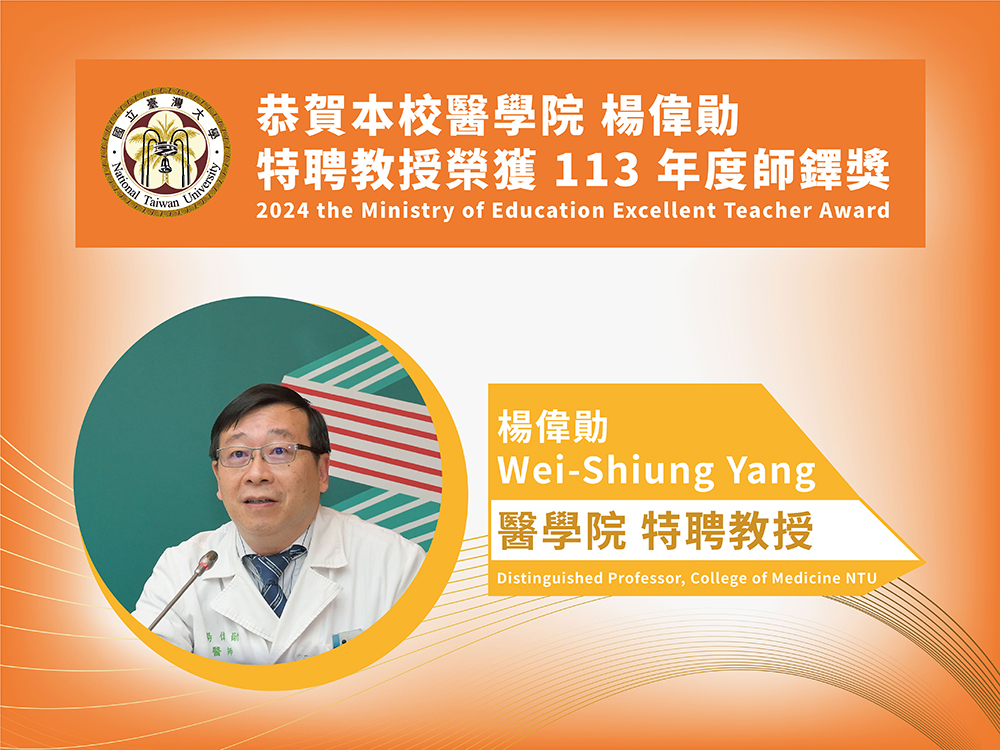
Prof. Wei-Shiung Yang wins MOE National Excellent Teacher Award
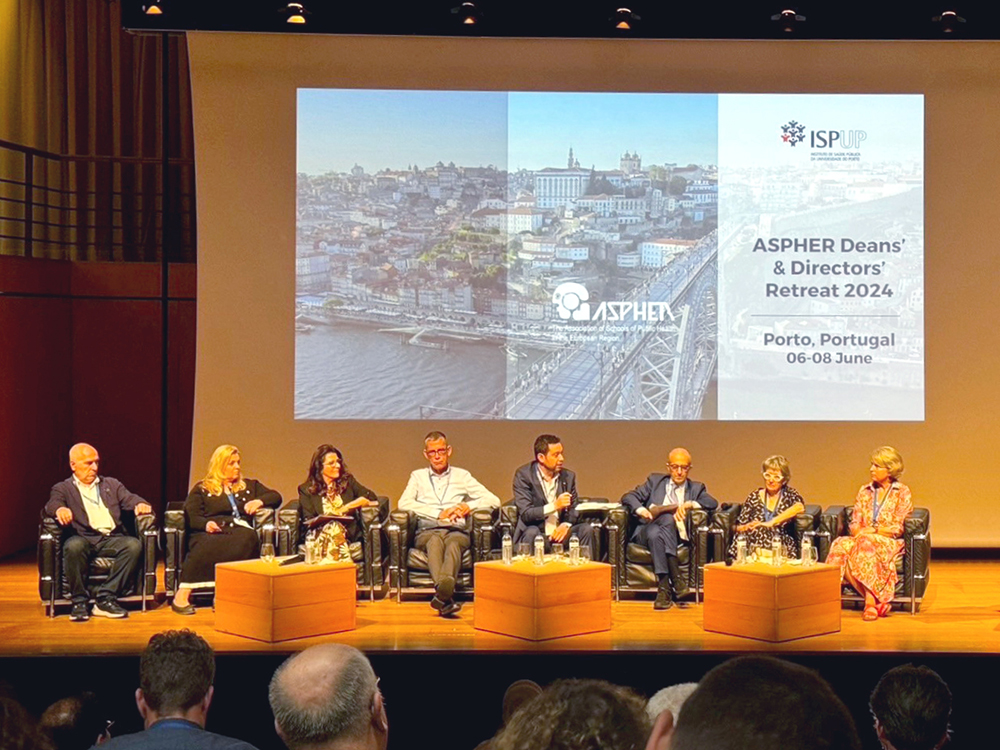
NTU College of Public Health's Global Health Program Joins the Association of Schools of Public Health in the European Region
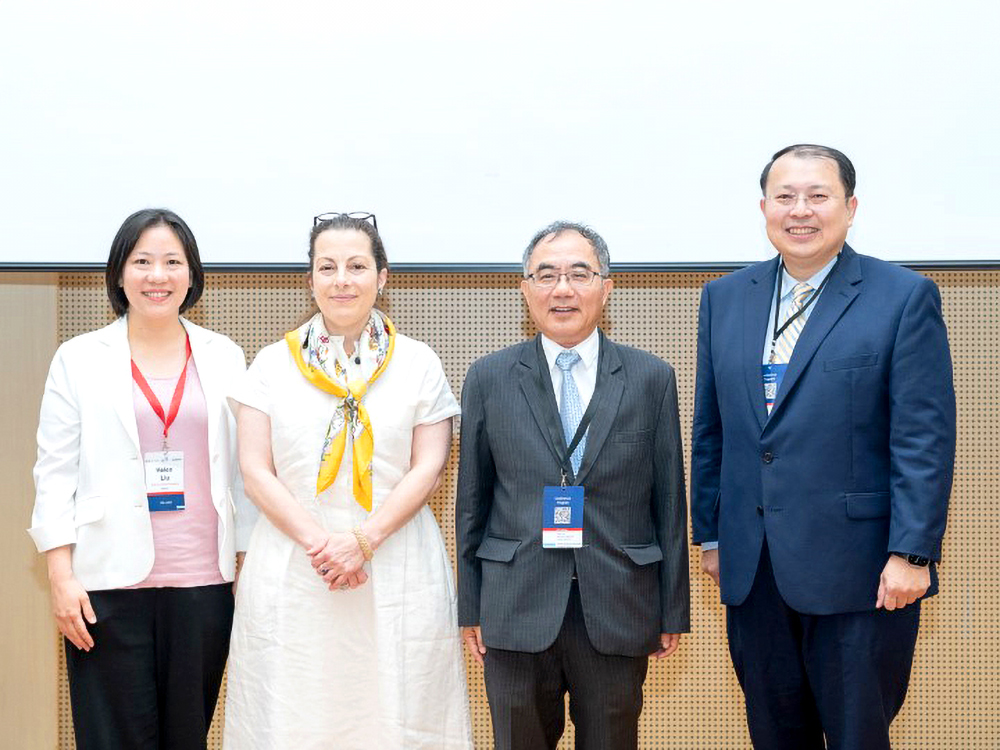
NTU hosts a successful dg.o 2024
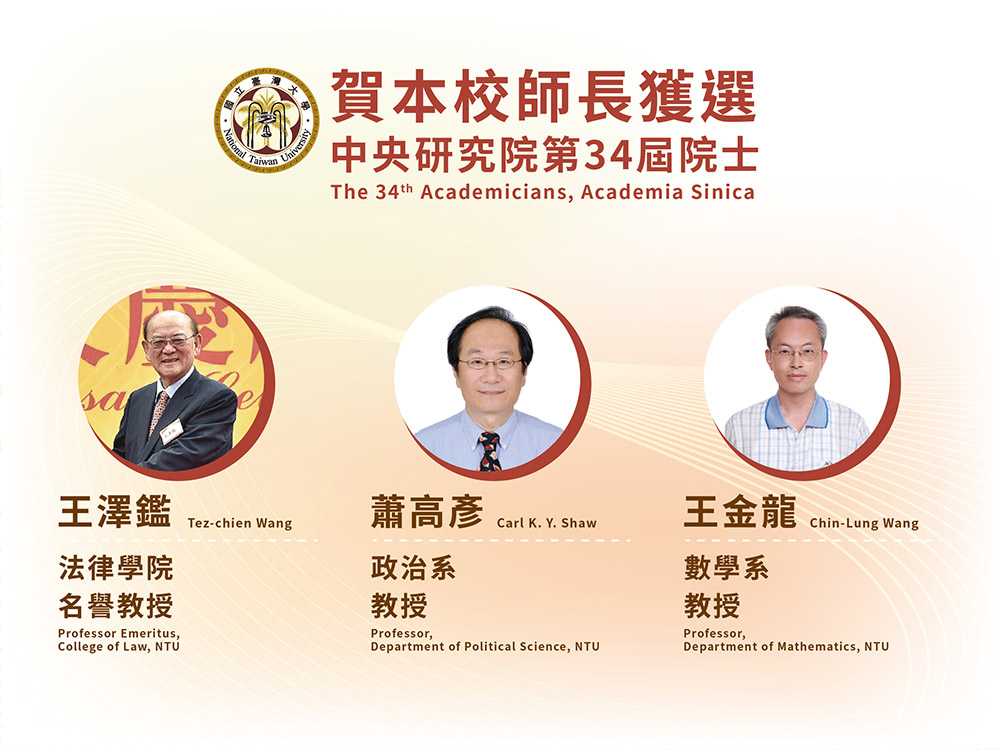
Congratulations to NTU faculty members elected as 34th AS academicians
Current Spotlights